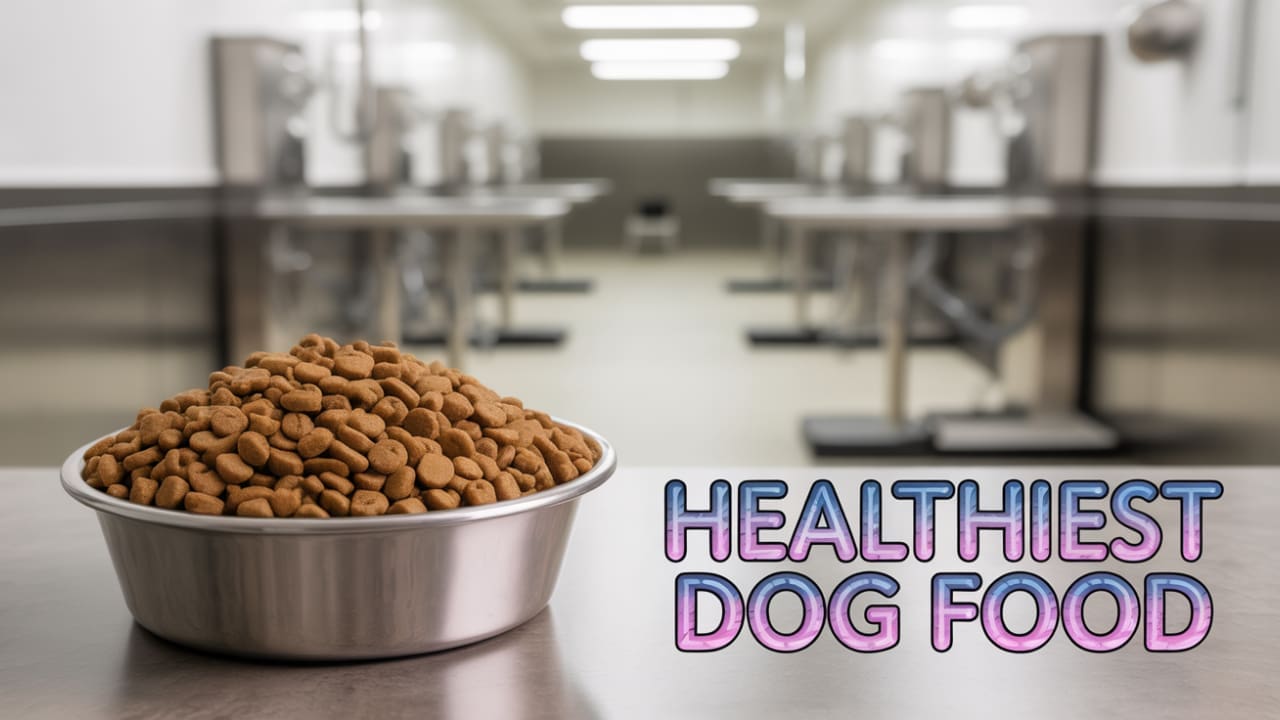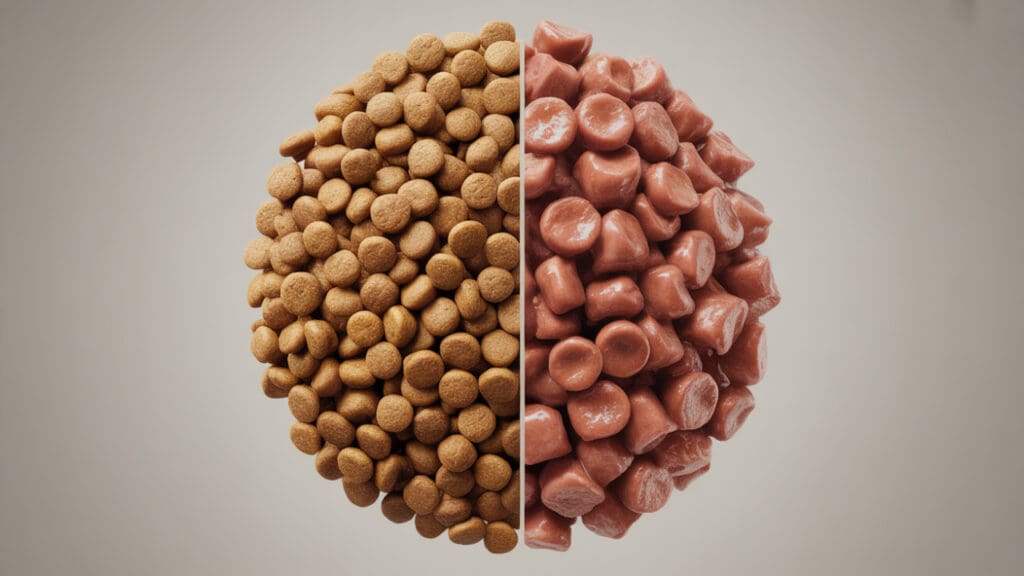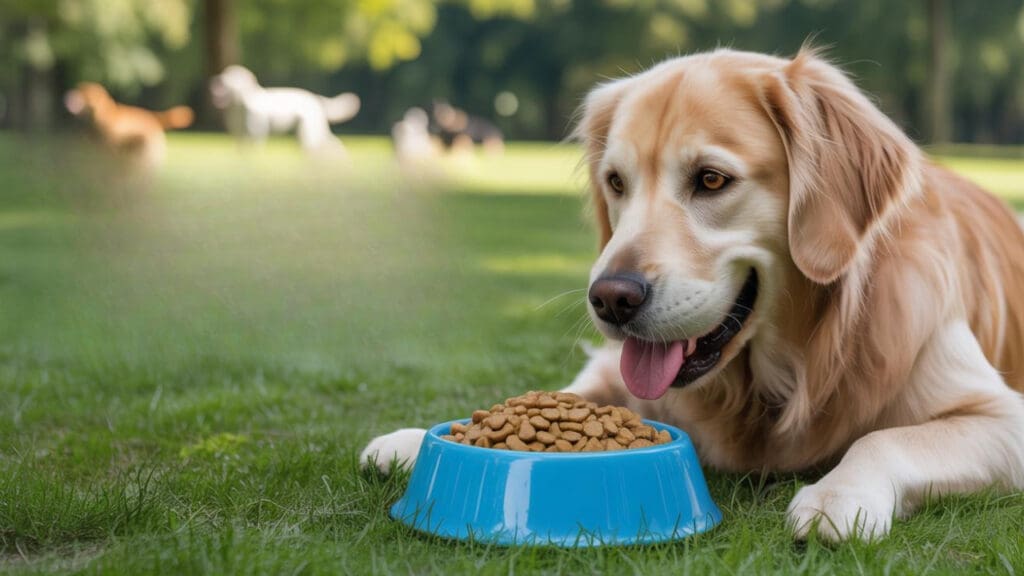
Newsletter Subscribe
Enter your email address below and subscribe to our newsletter

Enter your email address below and subscribe to our newsletter

You just can’t figure it out. Your dog has been struggling with itches and ear infections. Maybe they are even facing some unexplained digestive issues. Perhaps you’ve wondered if the food in their bowl is to blame. The answer is: most likely.
Hydrolyzed protein dog food reviews reveal one thing. When traditional diets fail, this specialized formula can often be more compatible with your dog’s dietary needs. Essentially, the formula breaks down proteins so finely that your canine’s immune system can’t overreact.
Veterinarians prescribe it for both short-term elimination trials and also as a safe, long-term solution. After all, the hydrolyzed protein dog food does meet nutritional standards.
That said, while this formula can most likely make a difference in your canine’s health, the cost is definitely higher than your regular, everyday kibble. You can expect each bag to cost over $90. There’s also an unusual taste that your dog might resist, so some pet parents just give up on them soon after the bag.
However, you should know that hydrolyzed dog food reviews from clinical studies and owner testimonials have almost always pointed to positive results. Some benefits include fewer medications for your canine pal, fewer flare-ups, and lasting relief.
Let’s continue exploring this formula. We’ll check out the pros and cons of switching over to this diet. And we’ll look into some tips to help you choose confidently for your dog’s well-being.

Hydrolyzed protein dog food… It sounds fancy and complex. Does it need a prescription? Well, the concept is actually surprisingly straightforward. To put it simply, hydrolyzed protein means that the protein has been broken into very small fragments, and we call these peptides. This breakdown process can be achieved either chemically or enzymatically.
Now, what’s fascinating is that the peptides are so small that your dog’s immune system is unlikely to see them as allergens. And that means food formulated this way can really help your canine that’s suffering from food sensitivities, skin irritations, or chronic digestive upset.
Let’s compare this with regular dog food. Perhaps your pet pal is allergic to a protein in beef, chicken, dairy, or soy. What happens is that your dog’s immune system sees the proteins as “foreign invaders.” And it attacks them by producing antibodies called Immunoglobulin E (IgE).
The chain reaction happens from here, as these antibodies then trigger other chemical releases, like histamine, in your dog’s body. And they can cause inflammation. This then manifests visibly as itchiness, redness, infections, bloating, vomiting, etc.
Do you see why hydrolyzed diets work now? They basically take away the “signal” that your dog’s immune system can normally detect. Think of it this way. The protein has already been broken down, so it essentially “flies under the radar.” With that, your canine friend is spared from allergic reactions.

You might be wondering how to switch your dog’s diet to a hydrolyzed one. But first things first, you should take your dog to see a vet before making a move. Veterinary nutritionists say that hydrolyzed protein dog food is usually prescribed during an elimination diet trial. This is basically a diagnostic process.
From there, you should feed your dog only hydrolyzed food for several weeks. Monitor and take notes every day. See whether the symptoms improve. If they do, that means your canine pal most likely has food allergies, possibly to one of their favorite protein sources.
After that, your vet might recommend that you stick to using hydrolyzed protein either long-term or as a way to pinpoint specific problem ingredients. The latter means you reintroduce single proteins (chicken, beef, or dairy) one at a time after your dog’s back to health and see which protein they are reacting to. It’s basically to help you build a safe food list.
Don’t make the mistake of just changing your dog’s food to something grain-free or “natural.” If your canine is really allergic to proteins, not grains, then the grain-free formula does close to nothing to help with their symptoms.
Cost is usually something most dog parents would be concerned about. You should know that hydrolyzed protein diets are definitely not as cheap as regular kibble. After all, there’s a specialized process involved in making them. You can expect one bag to cost more than $90, so budget well if you’re set on making the switch.
That said, the results are usually quite positive. You may find that your dog needs fewer vet visits, and they’ll no longer need to rely on medications like steroids or antihistamines. It’s a quality of life upgrade for your canine friend. Remember, hydrolyzed diets uncover the root cause.
Veterinary science in 2025 paints a more complicated picture than the traditional explanation. The usual belief is that hydrolyzed diets break proteins down into small fragments (peptides) too tiny for the immune system to detect. However, newer studies show that this isn’t always true. T-cells (the part of the immune system that drives many food allergies in dogs) can sometimes still recognize and react to these smaller fragments.
A key 2020 study by Masuda and colleagues tested two leading hydrolyzed diets in 316 dogs with suspected food allergies. The findings were striking:
In other words, as many as 1 in 3 dogs may still react to hydrolyzed protein diets.
The study highlighted several reasons:
Hydrolyzed diets can help many dogs, but they are not guaranteed solutions, especially in cases of severe or multiple protein sensitivities. This is why veterinary guidance is essential before starting or relying on these specialized diets.

You are absolutely right to ask if hydrolyzed protein dog food is good for your dog in the long run. You might have heard people telling you that it’s just a short-term fix. Or perhaps you’re just wondering if the diet can sustain your canine’s health for years.
In any case, you should know that if you properly balance the diet that is prescribed by a vet, hydrolyzed diets can be both safe and nutritionally complete for your pet pal. These foods have met the AAFCO standards. And that means they contain essential nutrients that your dog needs that benefit their growth and health.
But you should be careful not to think that all hydrolyzed formulas are interchangeable. Some are prescription-only. These diets are meant for dogs with chronic allergies. Some, on the other hand, might be lower-grade products. You’ll need to check the clinical backing. If none, then it’s a reg flag.
Talk to your vet and seek guidance from them. If you choose the wrong type of food for your dog’s specific case, there might be issues like nutrient gaps or not fully addressing their root causes. In essence, think high-quality food endorsed by vet-approved credentials for long-term feeding.
This way, the diet can help control your dog’s allergic symptoms and keep them healthy. Just remember that you’ll still need to bring your dog to see your vet for regular checkups and monitor their conditions, always.
And by the way, if you’re wondering whether your dog can eat hydrolyzed protein food even though they do not have any food allergies, the answer is yes. That said, your canine probably doesn’t need that specialized them if their immune system is perfectly fine.
Naturally, with every choice you make come the advantages and disadvantages. That’s no exception when it comes to hydrolyzed protein dog food as well. Let’s take a look at why you might or might not want to switch your dog’s food to a hydrolyzed one.
Hydrolyzed protein dog food reviews show that the most evident advantage is its effectiveness in managing food allergies and sensitivities. Like what you’ve learned, the microscopic proteins in this food are tiny enough that your dog’s immune system doesn’t think of them as threats. And the diet is usually well-balanced and nutritious.
Some owners also say that their dogs have seen better digestion and improvement in stool quality thanks to the formula. Other visible benefits include the dogs scratching less, having shinier coats, and becoming more energetic. For dog parents like you, it means fewer visits to the vet.
As for disadvantages, the top complaint is most likely the cost. If you’re thinking of switching your dog’s food over to a hydrolyzed diet, expect to pay about two to three times more than you’d pay for regular kibble.
There’s also the issue of palatability. You should probably know that hydrolyzed formulas can have a unique taste or smell. And your dog may not like it or perhaps is reluctant at first to give them a try. But don’t give up so soon. Vets say the transition period can take from days to weeks. And if this switch can really help your pet, you might want to persevere.
One more thing to note is that most of the time, high-quality hydrolyzed protein foods are prescription-only. And that means you’ll need your vet’s approval before you can buy them. It’s both a pro and a con, depending on how you view it.
When treating food allergies in dogs, veterinarians typically recommend two main approaches: hydrolyzed protein diets and novel protein diets. Knowing the difference can help you make the best decision for your dog, always in consultation with your vet.
| Feature | Hydrolyzed Protein Diet | Novel Protein Diet |
| How it works | Breaks a common protein (e.g., chicken) into tiny fragments that are less likely to trigger the immune system | Uses a single, unusual protein your dog has never eaten before (e.g., kangaroo, venison) |
| Best for | Dogs sensitive to multiple proteins; elimination diet trials | Dogs allergic to one or two common proteins (e.g., chicken, beef) |
| Success rate | Helps about 90% of allergic dogs, though 20–40% may still react | Works well if the protein is truly novel-success rates range from 84–95% |
| Risk of contamination | Lower with prescription-only brands | Higher, since many plants process both novel and common proteins |
| Cost | Usually higher ($90+ per bag) | Variable, but often high for high-quality sources |
| Palatability | Some dogs may take time to adjust | Often well-accepted-dogs like the new flavors |
| Long-term use | Safe for lifelong feeding | Also safe for lifelong feeding |
| Availability | Mostly prescription-only | Available in both prescription and over-the-counter forms |
There is no one-size-fits-all answer. Your veterinarian will help you decide which strategy – a hydrolyzed diet or a novel protein diet – is the best diagnostic and long-term tool for your specific dog based on their medical history, suspected allergens, and response to initial trials.
Now, you might be overwhelmed by a good number of brands out there. Know that the best rated hydrolyzed protein dog food should be clinically tested and prescription-grade. Let’s check out some of the factors that you’ll need to look out for when choosing a brand for your dog.
The main one you should watch out for is the source of protein used. Some brands rely on hydrolyzed soy. Others may use chicken, poultry by-products, or even novel proteins like salmon. Check and see if your dog is sensitive to that particular protein. If they are highly sensitive, then even hydrolyzed versions of the proteins may not provide complete relief.
The next thing to consider is the brand’s reputation in terms of quality production. Generally, prescription-only diets are the safest choices. You can check out brands like Royal Canin, Hill’s Prescription Diet, or Purina Pro Plan Veterinary Diets. The companies behind have invested much in research and quality control to make sure that the hydrolysis process is effective.
If you see something that reads “hypoallergenic” or “sensitive skin and stomach,” know that they may not be hydrolyzed protein diets. You want to look for foods that are labelled with words like “hydrolyzed soy protein isolate” or “extensively hydrolyzed chicken liver.” They basically tell you that the proteins have been properly processed.
Lastly, you’ll need to think about the importance of tailoring the diet to your dog. Maybe your little friend likes dry kibble versions. Or maybe they prefer canned options for taste and digestibility. The experience of the transition can be improved if your canine accepts the food more readily.
Now, if you’re starting to switch your dog’s food to a hydrolyzed one, remember that it’s not an overnight process. The transition takes time. Let’s take a look at the step-by-step process in order to help you smooth out the transition.
For days 1-3, introduce the hydrolyzed food gradually. We’d recommend that you start by mixing 25% hydrolyzed food with 75% of your dog’s current food. Let your canine adapt to the new diet for now.
On days 4-6, you can try doing half and half. Again, you should monitor your dog. See if there are any signs of digestive upset. Some of the things to look out for include gas, loose stools, or loss of appetite.
After that, between the 7th and 10th days, go with 75% hydrolyzed food and 25% old food. Your canine friend should be adjusting well to the specialized formula at this point. After the 10th day, you can make the complete switch. And avoid giving them the old food again.
One thing you need to take note of is not to give your dog any table scraps or standard treats. If your dog doesn’t like the hydrolyzed food, try slightly warming it up (if it’s canned) or moistening it (if it’s kibble) with warm water.
Remember, you’ll need to be consistent in order to see improvement. Be patient and stick to the new diet for several weeks. Talk to your vet and take further action from there.
You probably have very specific questions about hydrolyzed protein dog food, especially when you’re trying to manage your canine’s allergies or digestive issues. Below are the most frequently asked questions. They are answered clearly and concisely to help you make informed decisions.
Your dogs can stay on hydrolyzed protein diets long-term if your veterinarian recommends it. The formulas themselves are nutritionally complete, so you don’t need to worry about that.
Yes, it’s particularly good for dogs with food allergies or sensitivities. These foods help reduce skin issues, digestive upset, and inflammation in your canine.
You should opt for veterinary-prescribed brands like Royal Canin, Hill’s Prescription Diet, and Purina Pro Plan. They are often rated among the best because of their clinical research backing.
Alternatives may include limited-ingredient diets, novel protein formulas (such as duck or venison), or home-prepared meals. But you should do so under veterinary supervision.
The main drawbacks include higher cost and limited availability. In some cases, the food may not be as palatable to your dog compared to regular kibble.
It is primarily used to manage food allergies and sensitivities. Know that the hydrolyzed proteins are less likely to trigger an immune response.
The proteins are broken into very small fragments. So, your dog’s immune system is less likely to recognize them as allergens.
Yes, it’s safe. But it’s usually unnecessary unless there’s a medical reason for feeding it. Plus, these formulas are kind of expensive.
Vets recommend these diets to help diagnose food allergies and to manage chronic conditions, like skin irritation or gastrointestinal disease.
Not exactly. Hydrolyzed protein is one type of hypoallergenic dog food, but other types may use novel proteins instead.
The pet food industry is undergoing rapid innovation, with new solutions emerging for dogs with food sensitivities. Several promising trends are shaping the next generation of hypoallergenic diets:
A cutting-edge option is insect-based hydrolyzed protein, a source most dogs have never been exposed to. The global insect-based pet food market is projected to hit $4.15 billion by 2035, growing at 10% annually, fueled in part by demand for hypoallergenic alternatives. Black soldier fly larvae and cricket proteins lead the way, offering complete amino acid profiles while keeping the environmental footprint low.
For dogs with severe animal protein allergies, plant-based hydrolyzed diets are expanding the options. Formulations using hydrolyzed soy or pea proteins provide viable alternatives for dogs who react to all animal-derived proteins.
New advances in enzymatic processing aim to produce smaller, more consistent peptide sizes below the 1 kDa threshold, reducing the chance of immune recognition. Techniques such as ultrasound, pulsed electric fields, and high-pressure processing are being tested to create more reliable hydrolysates and overcome the limitations currently seen in 20–40% of cases.
The most exciting frontier may be nutrigenomics – using genetic testing to guide dietary choices. Early research suggests that DNA analysis could predict which dogs are likely to respond better to hydrolyzed versus novel protein diets. In the future, this may allow vets to skip the lengthy trial-and-error process and even identify risks for specific protein allergies before symptoms appear.
The next decade will likely see dog food for allergies become more precise, effective, and personalized. Instead of a one-size-fits-all approach, nutrition plans may soon be tailored to each individual dog-based on their unique biology, environment, and genetics.
So, are you still thinking of making the switch? If your dog’s currently struggling with the protein sources you’re giving them, perhaps this is a good call. Know that hydrolyzed protein dog food is one of the most reliable solutions out there for addressing such sensitivity concerns.
The broken-down, microscopic fragments are usually well-tolerated by your dog’s immune system. And you should see your pet friend scratching themselves less and showing much better digestive health. It’s a diet backed by vet research.
That said, make sure you budget well for the higher cost that comes with high-quality hydrolyzed foods. The taste might be an issue you need to get around, too. However, these drawbacks are often outweighed by fewer vet visits and a healthier, happier pet.
If the current diet is not cutting it for your dog, it’s time to take action. Talk to your vet and begin helping your canine companion thrive under your care.
Has your dog ever tried a hydrolyzed protein diet? Is there a brand or a specific product you’d recommend? Let us know in the comments down below!